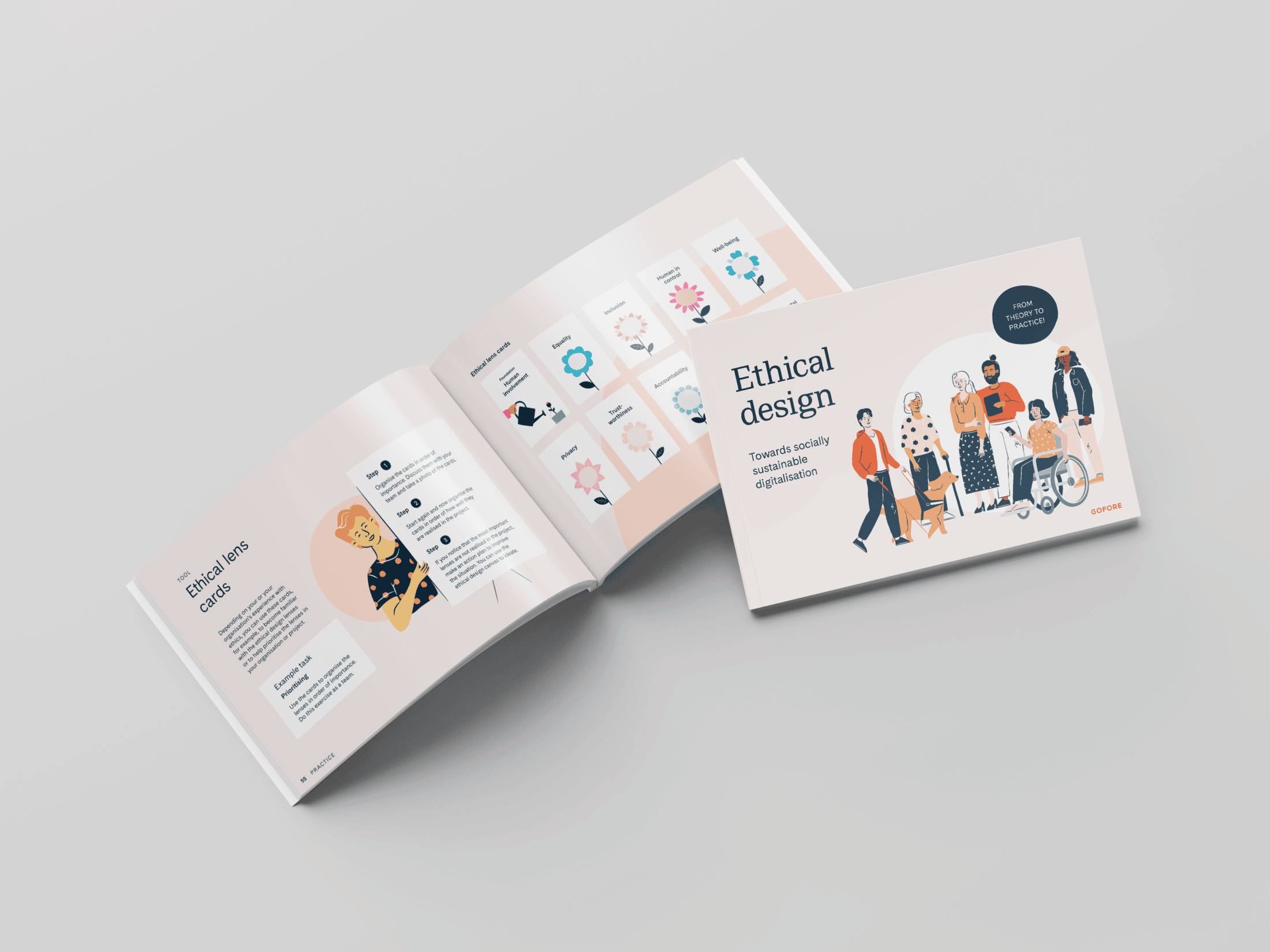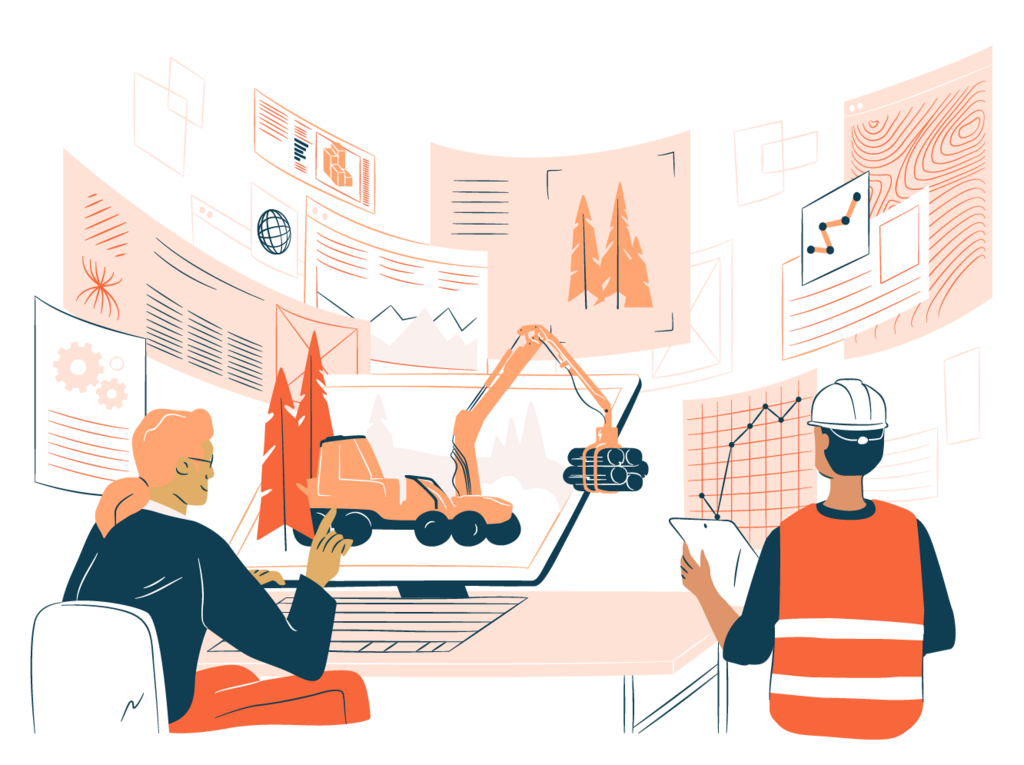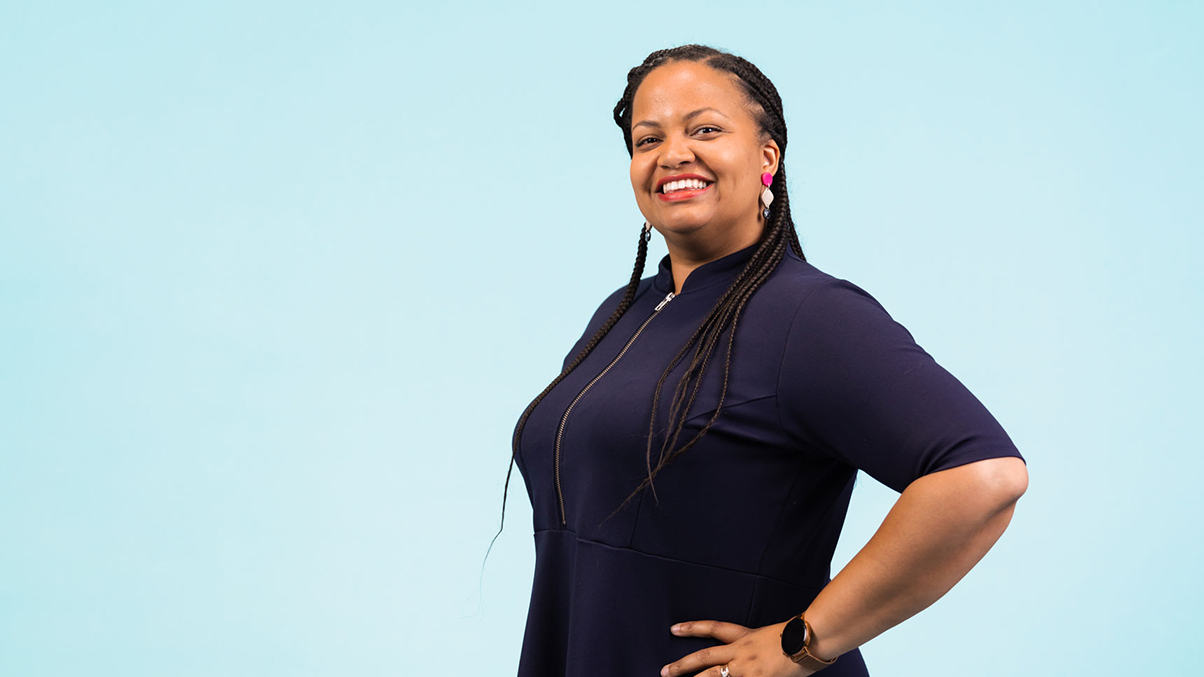What do you mean when you say you are pioneering an ethical digital world? Why are you talking so much about ethical digitalisation at Gofore, what does it mean in practice? Show me some concrete actions, how can one be ethical at project work?
These are the questions we have heard both externally and internally. Talking about ethics in the IT industry can sound difficult and something that is not for me, as I don’t know the ethical theories by heart.
But we can tell you, it is not that difficult and you can start with small steps.
Our Ethical Design booklet was launched at the Nordic Business Forum 2022. When listening to the NBF keynote speakers such as Yval Noah Harari and Martin Lindström, we realised that they are talking about the same thing. The timing for ethical design is definitely right!
We started to frame ethical design framework already a while ago. Here’s some of our previous posts related to ethical design, value-based design, wellbeing of users and inclusive design:
- Ethical design and value-based decisions guiding the work
- Let’s be in a well-being and not an ill-being business
- Diversity, equity and inclusion in the design of digital services – how to get started
When we started to talk about this new layer of human-centric design, what we call ethical design, our designers started asking for tools, practices and examples. We created Ethical Design booklet to answer to those needs.
What does ethical design mean and how was this booklet created?
We approached the topic by reviewing a range of design principles related to ethics, organised ethical design workshops with our design community, studied the pressing social issues of today’s digitalisation, and gathered our project experiences.
Ethical design is a value-based approach that invites us to be reflective and more aware of our conceptions of what is good. There needs to be multi-disciplinary dialogue in design processes and the ethical perspective should be present in all stages of our work. We must include also the most vulnerable user groups and their needs in the design process and not only concentrate on the goals of primary user groups. We should take a wider perspective. We want to raise awareness of ethical questions, so design stakeholders can make informed decisions.
What does the Ethical Design booklet include?
- First: Background, theory and food for thought. Where are societies going and where is digitalization taking us? How can people cope with the increasing amount of digital services they get involved everyday, whether they want it or not.
- In the middle: Nine ethical design lenses to help you to reflect in design work, at workshops, in team discussions or inside your own head. Each of these lenses can be used to inspire thinking about ethics from various perspectives and to make choices that promote good life.
- Last but not least: Tools for ethical design. The toolbox includes e.g. Reversed stakeholder map where those who can potentially be left out are now brought to the center of attention. We also present the Ethical design canvas, where you can select relevant ethical design lenses and ponder the potential risks and opportunities for vulnerable groups on individual and societal level. At the end, one useful tool for all kinds of projects is the Ethics timeline retro tool, where you can look back at your project and reflect with the help of ethics themed questions.
We challenge all design stakeholders to join the discussion of what ‘good’ means in ethical digitalisation and what kind of society we want to design. Remember, you can start small but grow big!
On our next Ethical design blog, we will present some of our design tools in more detail.




